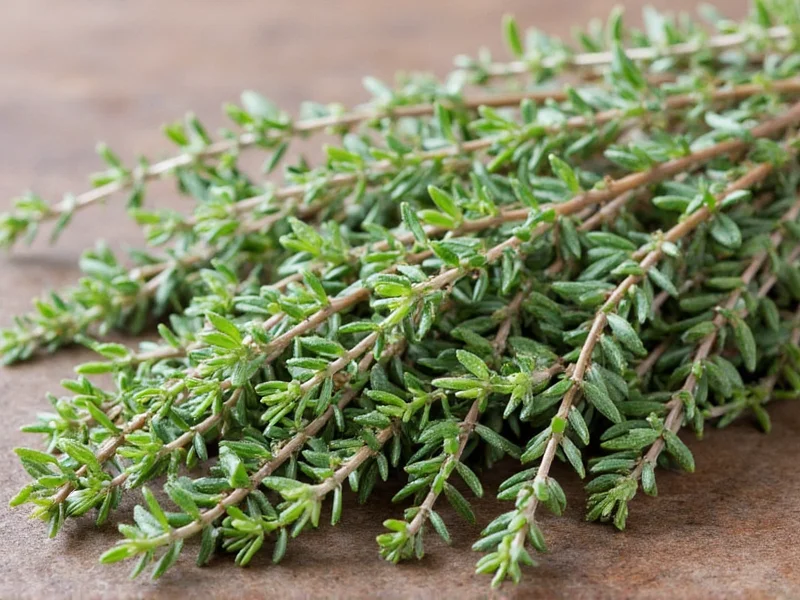Understanding herb conversions is essential for consistent cooking results. When a recipe calls for fresh thyme but you only have dried thyme available, knowing the proper substitution ratio prevents under-seasoning or overpowering your dish. The 1:3 dried-to-fresh ratio isn't arbitrary—it reflects how the drying process concentrates thyme's essential oils and flavor compounds.
Why Dried Thyme Is More Potent
During the drying process, thyme loses approximately 70-80% of its water content. This concentration effect means the remaining dried herb contains a much higher density of flavor compounds. Fresh thyme's delicate leaves contain moisture that dilutes its essential oils, while dried thyme packs those same oils into a smaller, more intense form.
Chef Marco Pierre White explains: Dried herbs aren't just dehydrated versions of fresh—they're transformed ingredients with different flavor profiles. Understanding this transformation is key to proper substitution.
Practical Conversion Guidelines
Use this simple reference when substituting dried thyme for fresh in your recipes:
| Recipe Calls For | You Have | Substitution Amount |
|---|---|---|
| 1 tablespoon fresh thyme | Dried thyme | 1 teaspoon dried thyme |
| 2 tablespoons fresh thyme | Dried thyme | 2 teaspoons dried thyme |
| ¼ cup fresh thyme | Dried thyme | 1¼ tablespoons dried thyme |
| 1 teaspoon dried thyme | Fresh thyme | 1 tablespoon fresh thyme |
Adjusting for Different Dishes
While the 1:3 ratio works for most applications, consider these adjustments based on your specific dish:
- Delicate dishes (fish, light sauces): Use slightly less dried thyme (try a 1:2.5 ratio) to avoid overpowering subtle flavors
- Long-cooking dishes (stews, braises): You can sometimes use the full 1:3 ratio as flavors mellow during cooking
- Finishing dishes (garnishes, fresh applications): Fresh thyme works better as dried won't provide the same aromatic freshness
Storage Impact on Potency
The age and storage conditions of your dried thyme significantly affect its potency. Properly stored dried thyme (in an airtight container away from light and heat) maintains peak flavor for 1-2 years. Older dried thyme loses potency, which means you might need to increase the amount slightly when substituting.
Test your dried thyme's freshness by rubbing a small amount between your fingers and smelling it. If the aroma is weak, you'll need to use slightly more than the standard conversion ratio.
Common Substitution Mistakes
Cooks often make these errors when converting between fresh and dried thyme:
- Using equal measurements (1:1 ratio) resulting in under-seasoned dishes
- Not accounting for the different flavor profiles—dried thyme has earthier notes while fresh offers brighter citrus undertones
- Adding dried thyme at the same point in cooking as fresh (dried works better added earlier to allow flavors to distribute)
- Not adjusting for personal taste preferences after making the initial substitution
When Fresh Is Truly Necessary
Some recipes simply won't work with dried thyme substitutions. These include:
- Raw applications like salads, compound butters, or fresh herb blends
- Dishes where the visual appeal of fresh green leaves matters
- Certain Mediterranean preparations where fresh thyme's delicate flavor is essential
When substituting dried for fresh thyme in recipes, always remember to taste and adjust. The conversion ratio provides a starting point, but your palate should be the final judge. Add dried thyme gradually, allowing 5-10 minutes for flavors to distribute before deciding if more is needed.











 浙公网安备
33010002000092号
浙公网安备
33010002000092号 浙B2-20120091-4
浙B2-20120091-4